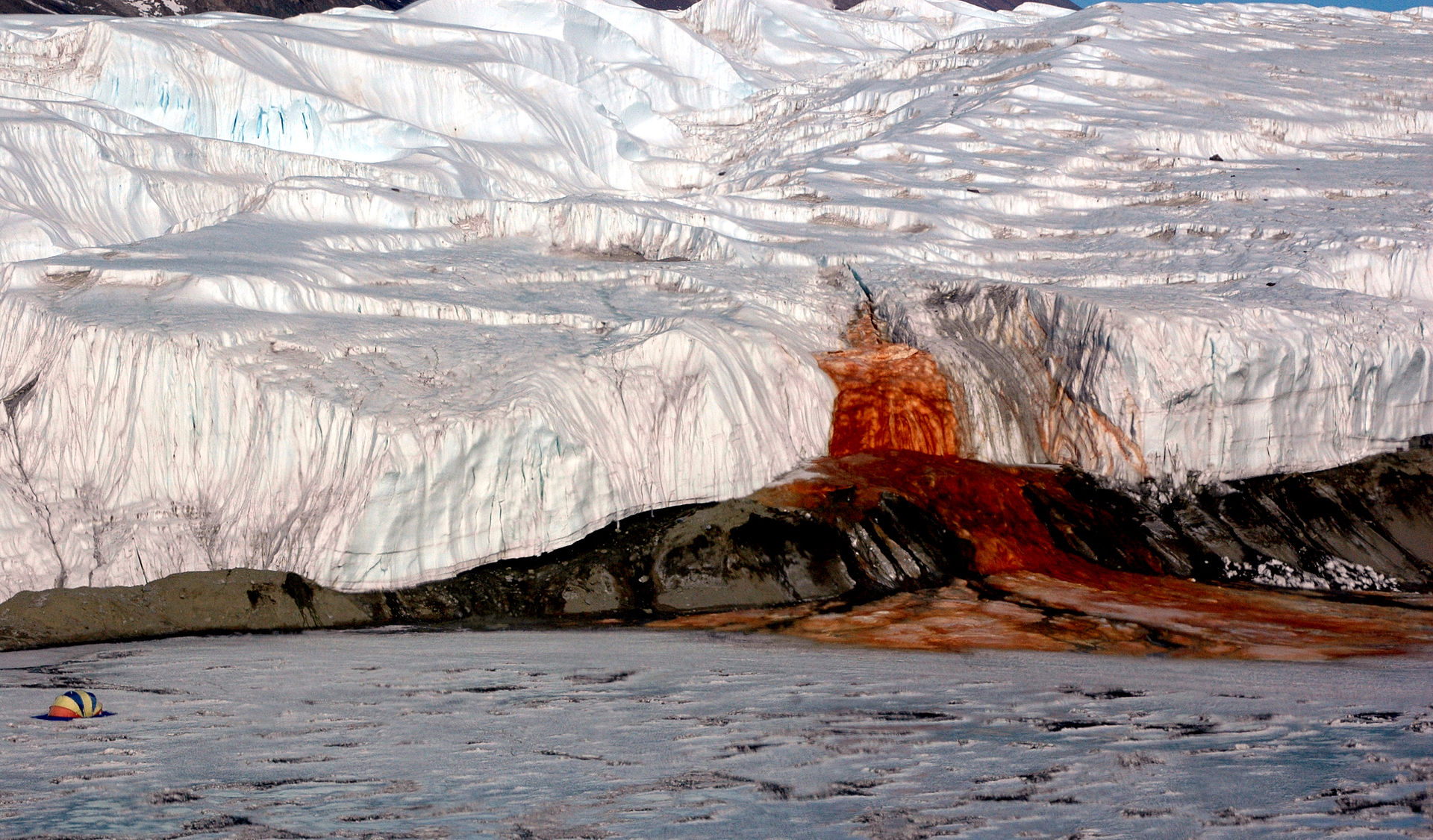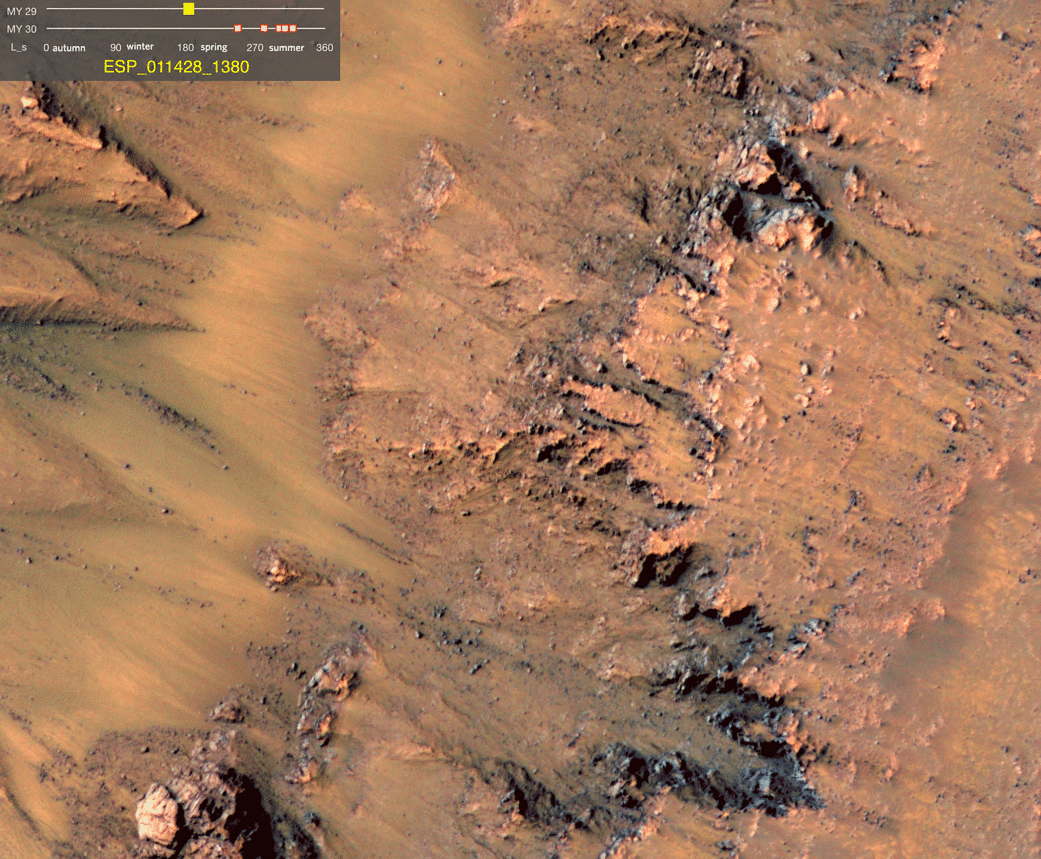Dry Valleys, Blood Falls, & Mars
Dry Valleys, Antarctica (credit: National Science Foundation)
The Dry Valleys in Antarctica are one of the strangest environments on Earth. High mountains surrounding the region creating a rain shadow effect that prevents moisture from the Antarctic interior from reaching the ocean. This environment creates cold, dry, landscapes with extreme aridity and virtually stationary glaciers cemented to the valley's floor. The Dry Valleys have remained ice-free for perhaps 10 million years and are used as test laboratories for what Mars might be like.
Taylor Glacier is particularly odd as it has a waterfall looking almost as if was bleeding, Blood Falls. The glacier is named for the Australian geologist who discovered it in 1911. Water samples from the falls have been analyzed and multiple microbes forms have been identified. The red color comes from bacteria which metabolize iron in a lake of ancient seawater locked under the glacier. The trapped water is enriched by iron-containing salts that oxidize and turn blood red as it seeps down the 50 foot high falls that emerge from a crack in the glacier's leading front.


Taylor Glacier and Blood Falls, Dry Valleys Antarctica (credit: US Antarctic Program)
Because of the Dry Valleys are ice-free, arid, and have been so for millions of years, the landscape is considered a surrogate for what Mars is like today. Investigations of extremophiles, organisms that thrive in extreme environments, is a prime reason for ongoing bio-geological research to learn methods for use on Mars someday. Many Martian craters show signs of seepage down their walls. It might be the result of saline water seeping from a underground aquifers. Salt water has a lower freezing point than fresh water and could exist as a liquid at the temperatures and pressure on Mars, especially at the equator. One example has been observed by HiRize camera on the Mars Reconnaissance Orbiter as it photographed the walls of Newton Crater over a Martian year. An animation shows seasonal color-change progressions. It is unknown what process is being observed on Mars.

Seasonal flows, Newton Crater on Mars (credit: JPL/NASA)
There are many unique environments worth exploring and potential organisms waiting to be discovered. Whether a bloody falls, a dry valley, or a canyon on Mars, the research mantra remains the same: follow the water!
WHB